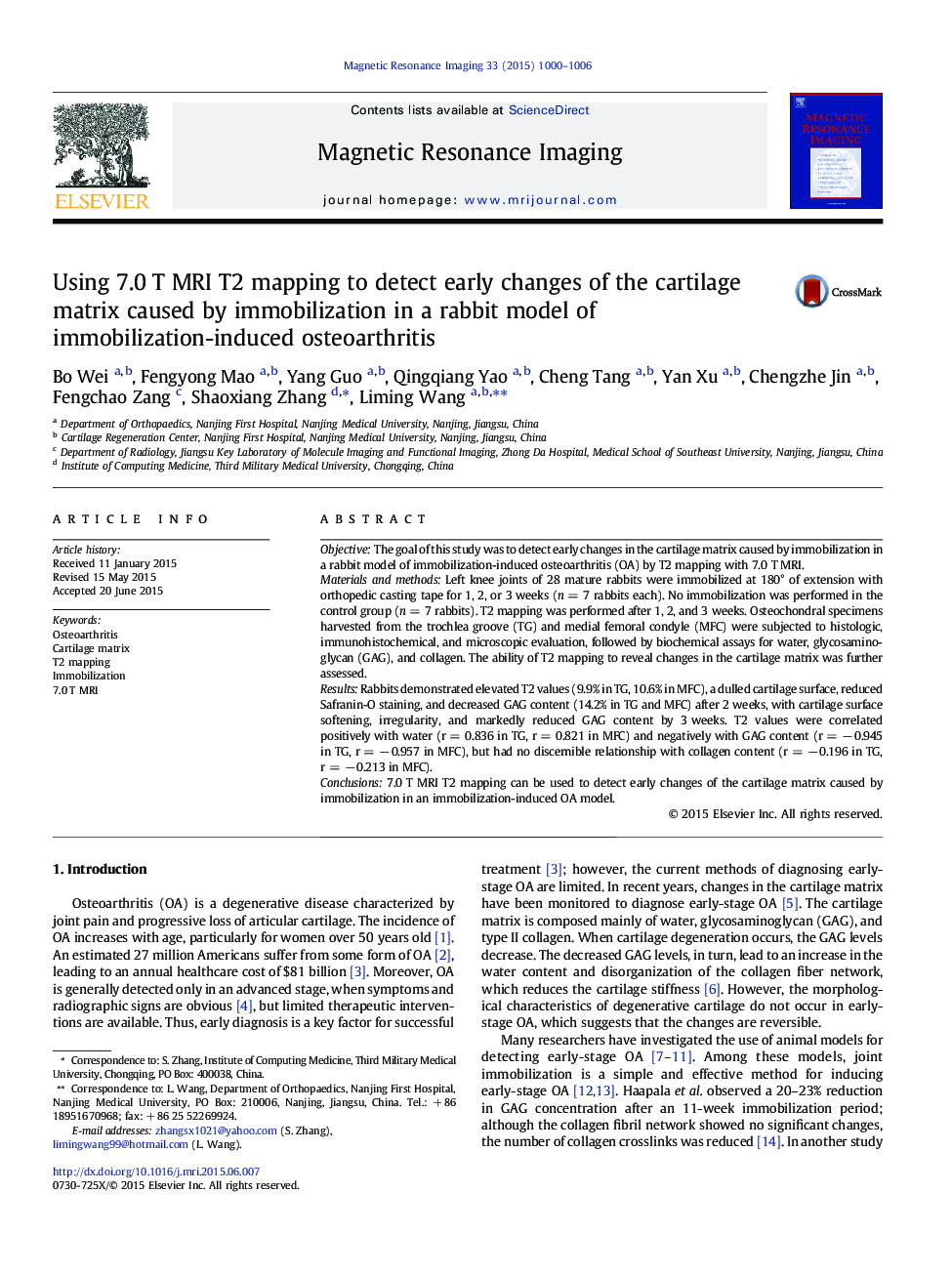| کد مقاله | کد نشریه | سال انتشار | مقاله انگلیسی | نسخه تمام متن |
|---|---|---|---|---|
| 1806181 | 1025188 | 2015 | 7 صفحه PDF | دانلود رایگان |

ObjectiveThe goal of this study was to detect early changes in the cartilage matrix caused by immobilization in a rabbit model of immobilization-induced osteoarthritis (OA) by T2 mapping with 7.0 T MRI.Materials and methodsLeft knee joints of 28 mature rabbits were immobilized at 180° of extension with orthopedic casting tape for 1, 2, or 3 weeks (n = 7 rabbits each). No immobilization was performed in the control group (n = 7 rabbits). T2 mapping was performed after 1, 2, and 3 weeks. Osteochondral specimens harvested from the trochlea groove (TG) and medial femoral condyle (MFC) were subjected to histologic, immunohistochemical, and microscopic evaluation, followed by biochemical assays for water, glycosaminoglycan (GAG), and collagen. The ability of T2 mapping to reveal changes in the cartilage matrix was further assessed.ResultsRabbits demonstrated elevated T2 values (9.9% in TG, 10.6% in MFC), a dulled cartilage surface, reduced Safranin-O staining, and decreased GAG content (14.2% in TG and MFC) after 2 weeks, with cartilage surface softening, irregularity, and markedly reduced GAG content by 3 weeks. T2 values were correlated positively with water (r = 0.836 in TG, r = 0.821 in MFC) and negatively with GAG content (r = − 0.945 in TG, r = − 0.957 in MFC), but had no discernible relationship with collagen content (r = − 0.196 in TG, r = − 0.213 in MFC).Conclusions7.0 T MRI T2 mapping can be used to detect early changes of the cartilage matrix caused by immobilization in an immobilization-induced OA model.
Journal: Magnetic Resonance Imaging - Volume 33, Issue 8, October 2015, Pages 1000–1006